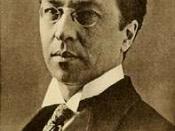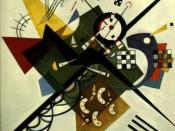We visit museums and galleries not just to view and comment on artworks that we see. We go to these places because they interest us, educate us and interact with us. Viewing an artwork is like speaking to someone - except we are listening with our eyes. An artist's work is his interpretation of the world around him - it may be a landscape, person or abstract subject, but it remains a reflection of that person and a part of his life. When we visit a gallery we are not merely interested in the brushstrokes on a canvas and what they depict, but the artist himself - his life, his loves, his mind. It therefore seems sensible that we would want to learn not only the work's title, medium and size, but how and where it was made, and why. An artist's choice of materials and techniques often gives a clear indication of what he/she is trying to express.
By examining these techniques, materials and preliminary sketches, we learn a lot more about the artist's intentions, challenges and considerations.
This essay examines the work of three significant artists who worked in the 20th Century - Jackson Pollock, Godfrey Miller and Pablo Picasso. It explores and compares their individual techniques and use of materials, and how these reflected their aims and intentions.
In terms of materials and techniques, one of the most unique and original artists this Century was American Abstract Expressionist Jackson Pollock. Pollock was born in Cody, Wyoming on January 12, 1912, and spent his childhood years in California and Arizona before arriving in New York in 1931. There he studied under rural figurative painter Thomas Hart Benton and the Art Students League. It was not until about 1938 that he began to experiment with abstraction, and until...


